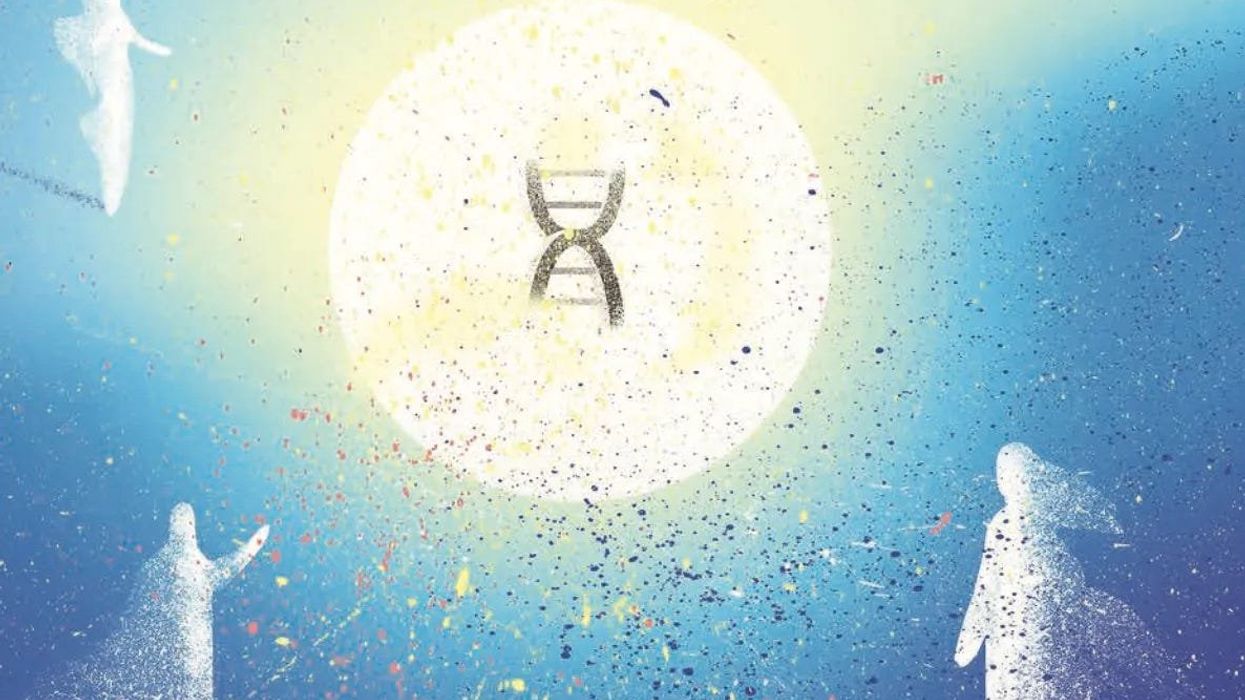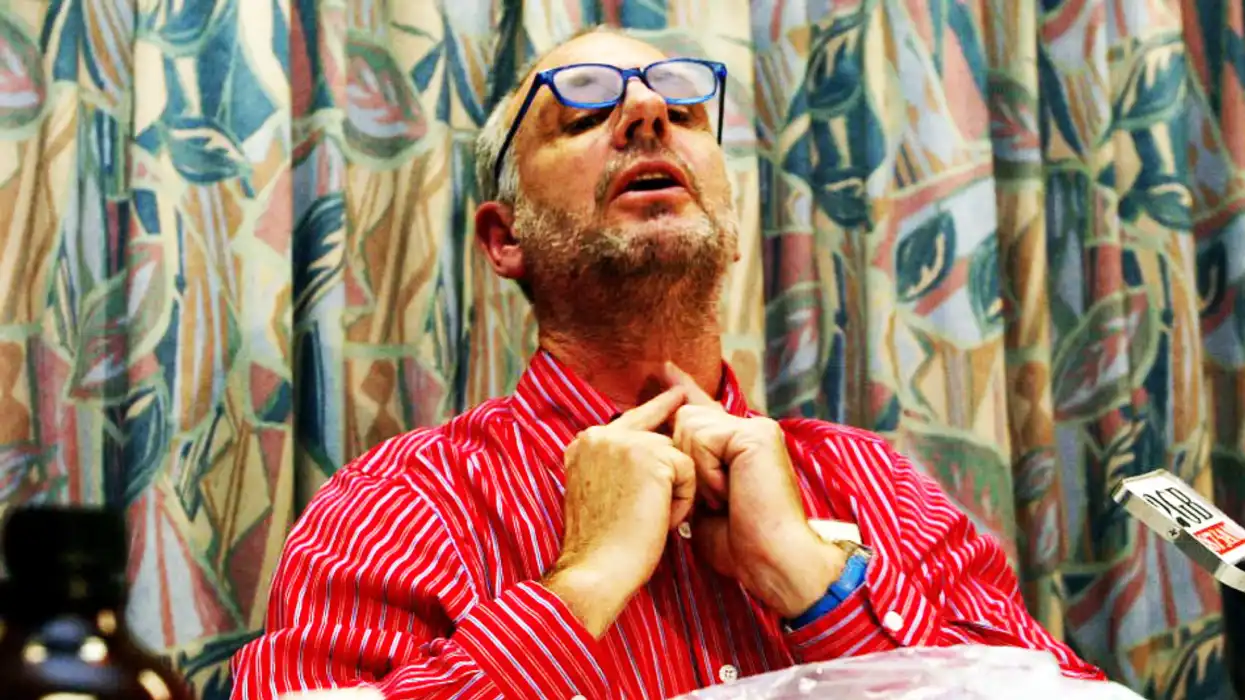
© 2025 Blaze Media LLC. All rights reserved.
In the year 2000, the draft of the human genome was completed. Scientists were finally ready to tread into what had been the dark matter of human DNA. Even with a single reference map to work with, everything changed, as the age of human genomics was born. Drawing the map of DNA was a decades-long project whose aim was to enable researchers to plunge into terra incognita. But the reason you watch history unveil before you — rather than being confident of its outcome — is that you can’t always predict it.
It is true that mapping the human genome has been a boon for basic research scientists. But unexpectedly it has also allowed for the explosion of a massive consumer genomics market, led by companies such as Ancestry.com and 23andMe, consisting of nearly 50 million Americans in 2021. As the 21st century unfolds, personal genomics will both expose the human past and guide us into the biotechnology waters of the human future.
The methods of genetic inference will spotlight the human family tree, which is actually more like a gnarled tangle of vines, and allow for the next steps in genetic engineering. This will first be geared toward curing a host of medical illnesses but will likely lead to more radical modification of what it means to be human.
The rate of change in genomics has been incredible over the last twenty years. Between 2007 and 2014 it surpassed even the rate of Moore’s law, the famous biannual doubling in computing power. While the first human genome cost $3,000,000,000 in today’s dollars, in 2021 we can obtain a high-quality readout of DNA for $300.
Whereas in 2010 a single Excel spreadsheet could list all the humans who had been whole-genome sequenced by name (a list that would include luminaries like James Watson and Steven Pinker), by 2020 there were hundreds of thousands, if not millions, of whole-genome sequences. By 2030 there will almost certainly be tens of millions of whole genomes in the United States alone.
A radical shift
This transformation was not driven by basic science and universities but by the economies of scale powered by firms catering to consumer demand. In the year 2000 the field of genetics was dominated by research in “fruit flies,” and our own species was an afterthought. Human genetics usually meant an analysis of pedigrees of families with congenital diseases.
When the geneticist L.L. Cavalli-Sforza published his magnum opus, "The History and Geography of Human Genes," in 1994, he surveyed data on over a thousand humans explored through a few hundred genes. This was the culmination of five decades of research. But by 2021 there were 50 million humans genotyped at hundreds of thousands of genetic positions. What had been a lifetime’s worth of work for a scientist assaying a piddly few hundred genes was transformed through personal genomics into an afterthought of historical interest.
When the National Geographic Society launched its “Genographic Project'' in 2005, the scientist leading it, Spencer Wells, was told that it was unlikely to recoup its costs by his superiors. It was a blue-sky pilot project, and they were skeptical about public interest in citizen science and personal genomics. The reality is that it made back its investment within a week, and the project continued for fifteen years.
In the wake of National Geographic’s success, the Silicon Valley startup 23andMe entered the space and brought a certain marketing panache, transforming what had been a genealogical hobbyist’s enterprise into a sexy Silicon Valley consumer product that provided “news you can use.” While National Geographic and its small privately owned competitor Family Tree DNA focused on genetic genealogy, 23andMe returned medical results as well as ancestral ones. Co-founded by Anne Wojcicki, then married to Google’s Sergey Brin, 23andMe showcased its genetic technology by disclosing that Brin carried a marker associated with Parkinson’s disease.
Though 23andMe has had its ups and downs, including a 2013 FDA decision that made it shut down much of its medical testing results, it kicked down the door first opened by National Geographic and made viable by the sequencing of the human genome. When new results in the scientific literature are published, millions of Americans can check their 23andMe results. Want to know your risk for Parkinson’s, Alzheimer’s, and macular degeneration? Check your 23andMe results. If a new risk factor for COVID-19 hospitalization is discovered, check your 23andMe raw data and see if you have it. You have the power to know or to remain ignorant.
Genetics in the 21st century has mutated from a matter of antiseptic laboratories distant from the concerns of the average American to something that injects itself into our daily lives as a matter of course. Most of the sales for consumer genetic kits occur between Thanksgiving and Christmas, and the results from these tests are fodder for family discussions during the holidays.
While 23andMe has focused both on medical tests and more “recreational” genomics, its rival Ancestry has been laser-focused on genealogy and ethnicity, and the two companies have totally transformed the self-conceptions of millions of Americans. Though in the abstract most black Americans were aware that they had white ancestry, genetics can now tell them individually their exact proportion.
New Jersey Senator Cory Booker now knows he’s 47% African, 45% European, and 7% Native American. Even white Americans, who usually think they know their own genealogy, can be in for a surprise. Fantasy author George R.R. Martin discovered that he is one-fourth Jewish, rather than one-fourth Italian. His paternal grandmother had an affair with a Jewish man, after which her Italian-American husband left her.
More generally, personal genetics problematizes one of the more prominent chestnuts of wisdom promoted by the American intelligentsia in the late 20th century: that race is a “fiction.” In 2003, PBS, that arbiter of elite American culture, showed “Race: The Power of an Illusion,” which argued that the concept has no biological basis.
And yet within ten years, tens of millions of Americans were getting results from DNA kits telling them they were “84% African, 16% European,” and geneticists were documenting that our ancestry is strongly correlated with geography. People in East Asia are more related to each other than they are to people in South Asia, while Brahmins in South India are more closely related to Brahmins in North India.
Understanding who we are

While Americans wrestle with the semantics of race, which has both a genetic and social basis, the reality is that genomics has transformed our understanding of our past and the statistical patterns that define our present. We now know, for example, that the Khoisan hunters of Southern Africa are more genetically distant from the Yoruba people of Nigeria than the Yoruba are from some living in China.
In other words, genetics has altered our understanding of human variation in surprising ways but also confirmed other intuitions about correlations between regional heritage and physical ancestry and race. But whereas in the 20th century these assertions and analyses were filtered through the intelligentsia in their ivory towers, today consumer genomics companies cater to a customer base fascinated by their own individual heritage and interpreting in whatever way suits their own tastes and preferences. Market demand and interest dictate the outcomes of science.
Spencer Wells, at National Geographic, had a democratizing vision from the get-go. 23andMe and Ancestry were in the game to make money. But all these consumer genomic efforts decentralized the production and dissemination of knowledge so that in 2022 we are faced with a schizophrenic landscape where elites in academia deny the biological basis of race, while millions of American consumers interpret pie charts and bar graphs that they believe inform them on their racial heritage.
In some ways, this genomic revolution reflects the same dynamics highlighted by Martin Gurri in "The Revolt of the Public and the Crisis of Authority in the New Millennium." Though 20th-century genetics is often viewed as a lab science, it was, and today is, also part of information technology, telescoping into one’s past and interpreting the patterns elucidated by one’s pedigree, just as in Gurri’s telling, the public is revolting against the implausible nostrums promulgated to them by their betters, the scientific elite.
This democratization also applies to medicine and diagnosis. In the near future, a proliferation of applications and tools are likely to be able to interpret whole-genome data and provide interpretations to individuals. This threatens professionals, who in the past few centuries have become the guardians of the health of the public. Consumer genomics allows for a level of disintermediation that threatens their licensing cartels. More concretely, it allows for greater personal ownership of health.
However, its ultimate utility may be in the synergies of genomics with bioengineering. If the 2010s have been the decade of reading the genome, the 2020s will become the decade of writing it. It will begin with medical illnesses, sickle cell, cystic fibrosis, and ALS. A child will be sequenced at birth, and a small minority will be found to have a genetic condition that might benefit from genetic engineering. Sequencing the whole genome not only targets the risk variant but allows for the construction of more effective genetic engineering targeting elements.
Such new technology will initially produce a miraculous revolution in many adult illnesses. Cystic fibrosis, sickle cell, and ALS will likely be cured. But what was initially used for medical applications will be leveraged in other contexts. In the 20th and early 21st century, body modification spread across the population, and genetic engineering presents the possibility of early and effective modifications. Want blue skin? That’s possible. How about naturally curly hair? Maybe. These are aesthetic changes that are comprehensible, but who knows what sort of “designer children” wealthy and perverse individuals may wish to engineer? The upcoming decades will give us the opportunity to transform the body and make it a protean reflection of our inner identities. Who wields and regulates these technologies may turn out to be the most vital question of the 21st century.
But we aren’t there yet. In 2023 we see its glimmers and possibilities, just like in 2000 we saw the faint shadows of the coming genomics age. Now that we’re in it, it is time to consider the reality that we are moving beyond it. The genomics age will end when genomics is no longer magic, but routine and basic. Once genomics is interleaved into our lives, from monitoring the bacterial character of our household waste to predicting breast cancer risk, we’ll begin to move to the next stage, the age of genetic engineering. The modern tools of genomics allow us to know ourselves, but the future tools will likely allow us to transform ourselves.
- YouTube youtu.be
Want to leave a tip?
We answer to you. Help keep our content free of advertisers and big tech censorship by leaving a tip today.
Want to join the conversation?
Already a subscriber?
Razib Khan is a geneticist and polymath who writes about history, politics, evolution, and books. You can consider supporting his work at razibkhan.com.
razibkhan
Razib Khan
Razib Khan is a geneticist and polymath who writes about history, politics, evolution, and books. You can consider supporting his work at razibkhan.com.
@razibkhan →
more stories
Related Content
© 2025 Blaze Media LLC. All rights reserved.
Get the stories that matter most delivered directly to your inbox.
By signing up, you agree to our Privacy Policy and Terms of Use, and agree to receive content that may sometimes include advertisements. You may opt out at any time.






